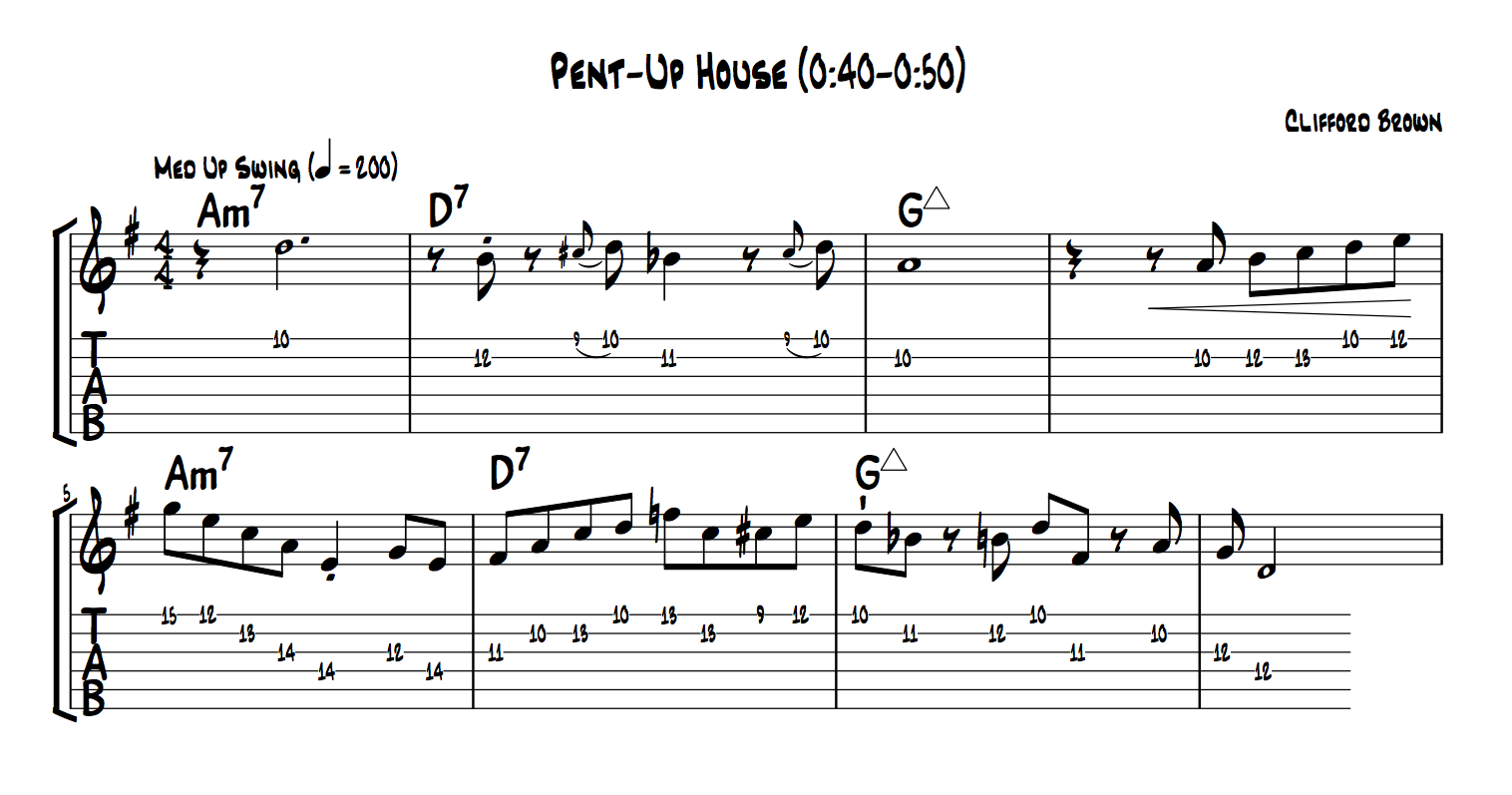Lick of the Week #1
20 Sep 2015Something I've always found to be true is that no matter much experience I have playing guitar, the fastest way to learn is always to listen to people playing the music I like and learn to play what they play. Ah, yes Transcription!
Unfortunately, it always can feel like exercise for me. You know it's good for you, you know you should do it, but somehow, you never find the time. To help me with this, I thought I would try to keep myself to honest by holding myself to the modest goal of transcribing one lick each week and sharing it here on my website.
Of course, the real value of transcribing comes from taking a lick and really making it your own. Dissect it, pull it into it's different parts. Change them, permute them, swap in something of your own. Play it in different keys, play it in different time signatures, play it over different chord progressions, play a whole chorus by just varying it. I leave that up to you to do the personalization :).
To make this accessible for everyone, I hope to only use audio from youtube and transcriptions using lilypond software. Also, for learning transcriptions off youtube yourself, you might find it helpful to loop and slow down the video.
So, to get us started let's take a look at a snippet from one of my favorite jazz solos of all time, Clifford Brown, Pent-Up House. I decided to look at a lick that he starts his solo off with (0:40-0:50).

This lick really sets the stage for the rest of the fluid lines in his solo, and starts with an embellishment of the hook to the original melody. It's also a great example of swinging through a ii-V-I with alteration of the V chord.
Three things to note:
- (second half of bar 5) The classic approach from root of the ii to 3rd of the V
- (second half of bar 6) The very classy approach tone sequence
- (first note of bar 7) The way he plays really behind the beat. I think that really captures his "flying forward yet leaning back" feel.
I've also included the lilypond code below. There was a bit of work to get this looking okay, so I wanted to share it in case someone else finds it useful. I also found the frescobaldi IDE to be very helpful. To get the nice jazz fonts, you have to follow the link here and install the fonts inside the lilypad app Applications/LilyPond.app/Contents/Resources/share/lilypond/current.
\version "2.18.2"
% Use LillyJazz Font
\paper {
#(define fonts
(set-global-fonts
#:music "lilyjazz"
#:brace "lilyjazz"
#:roman "lilyjazz-text"
#:sans "lilyjazz-chord"
#:factor (/ staff-height pt 20)
))
}
% No initial indent
% No string nums in staff
\layout {
indent = #0
\omit Voice.StringNumber
}
\header {
title = "Pent-Up House (0:40-0:50)"
composer = "Clifford Brown"
}
the_lick = \relative c'' {
\key g \major
\time 4/4
\numericTimeSignature
\tempo "Med Up Swing" 4 = 200
| r4 d2.
| r8 b-. r \appoggiatura cis d bes4 r8 \appoggiatura cis d
| a1\2
| r4 r8 \< a\2 b\2 c\2 d e \!
| g e c\2 a\3 e4-.\4 g8\3 e\4
| fis a c d f c cis e
| d-! bes r b d fis, r a
| g d2
}
the_chords = \chordmode {
a1:min7 d:7 g:maj7 g:maj7
a1:min7 d:7 g:maj7 g:maj7
}
\score {
<<
% Only print chords when they change
\new ChordNames {
\set chordChanges = ##t
\the_chords
}
\new StaffGroup
<<
% Add line breaks every 4 bars
\repeat unfold 2 {
s1 \noBreak s1 \noBreak
s1 \noBreak s1 \break
}
% Add the staff
\context Staff {\the_lick}
% Add the tab
\context TabStaff {
\clef moderntab
\set TabStaff.minimumFret = #9
\set TabStaff.restrainOpenStrings = ##t
\the_lick
}
>>
>>
}